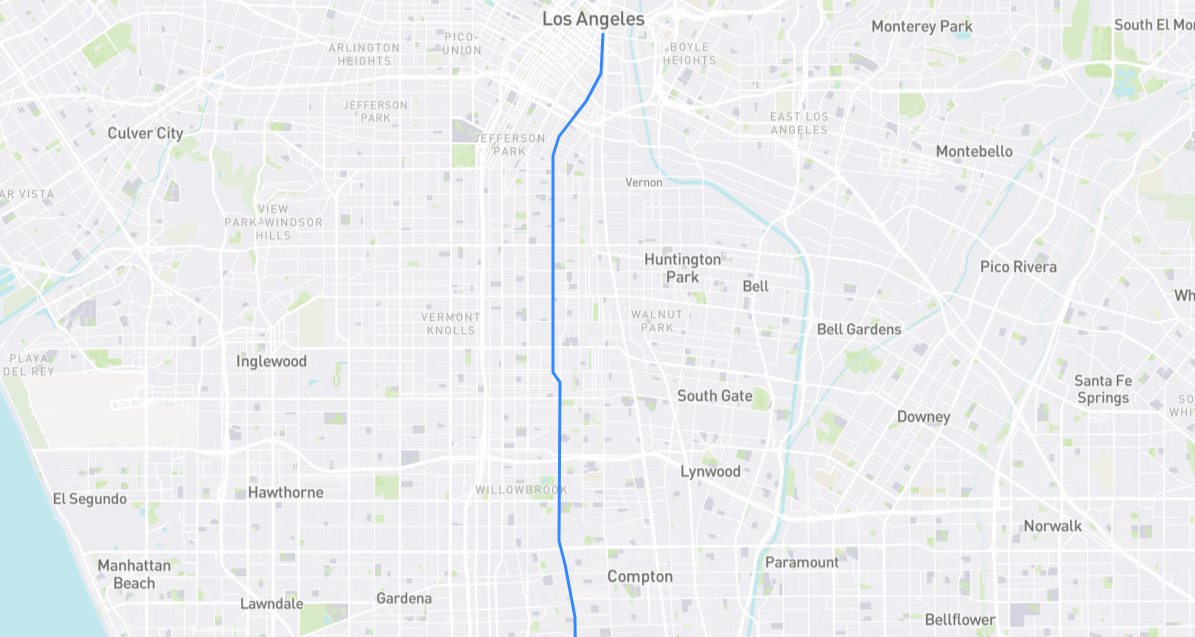Central Avenue was not designed to be central to Los Angeles but to Vernon, south of L.A. city limits. It was named by 1883 but was really put on the map four years later thanks to the Central Park tract, owned by Ezra Franklin Kysor (1834-1907). Kysor was a New Yorker who arrived in L.A. by 1868 and became the city’s top architect: of his many buildings, Pico House and St. Vibiana’s Cathedral still stand. Along with housing on his Central Park tract, which abutted the street of the same name, Kysor transformed an 8 acre orchard between present-day 49th and 50th streets – which he dubbed Kysor and Perry streets – into his very own Central Park. When Los Angeles annexed that part of Vernon in 1896, city leaders refused to pay Kysor for his park: they claimed that since it was a public space, they automatically owned it. (And L.A. already had a Central Park – it was renamed Pershing Square in 1918.) The City lost their claim and Kysor retained his land, but he razed the park in 1904. Central Avenue itself took over DTLA’s Wolfskill Street in 1897. The thoroughfare’s legacy as the heart of black Los Angeles began some years later, when black-owned businesses like the California Eagle newspaper opened along the street. Central’s famed music clubs would later make stars out of local jazz musicians like Dexter Gordon, Buddy Collette, and Charles Mingus.
Find it on the map:

